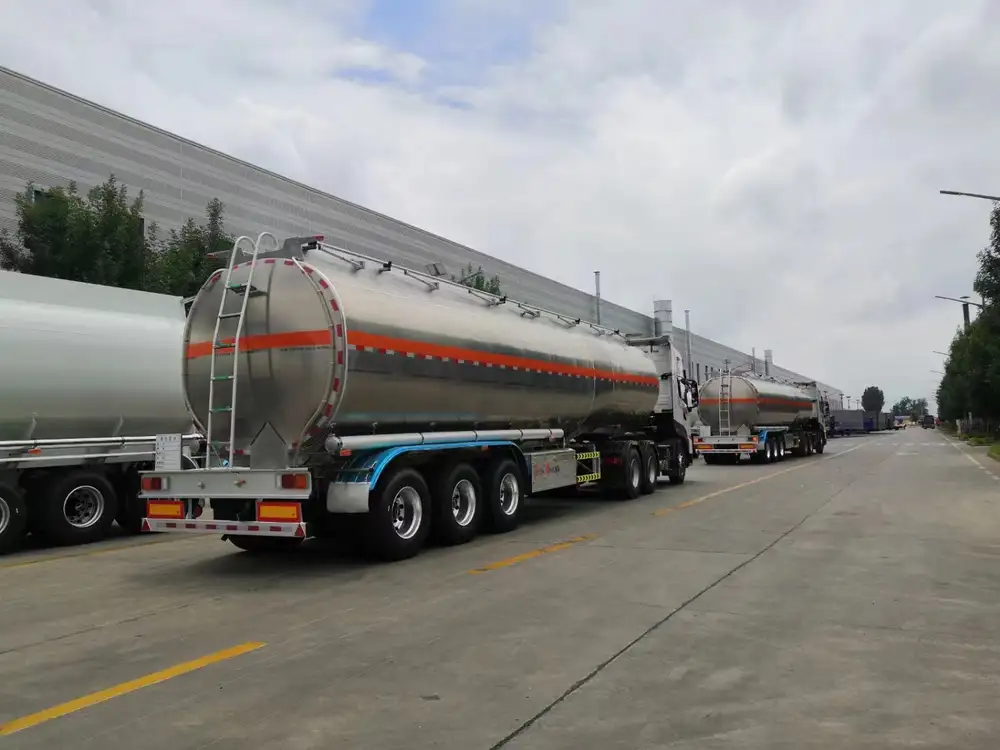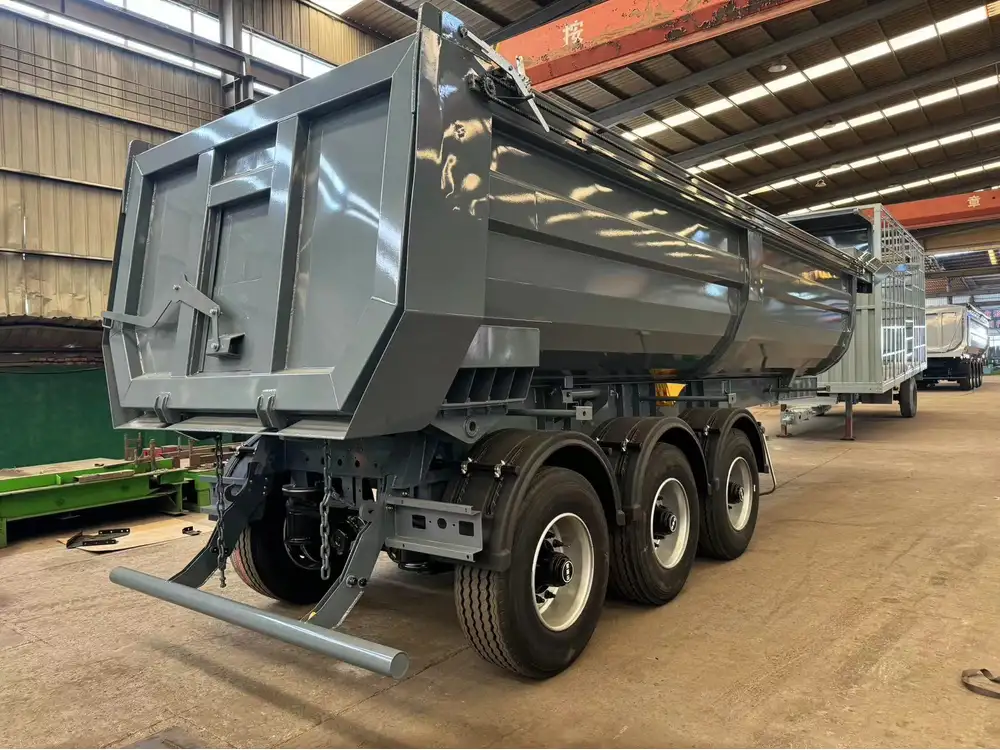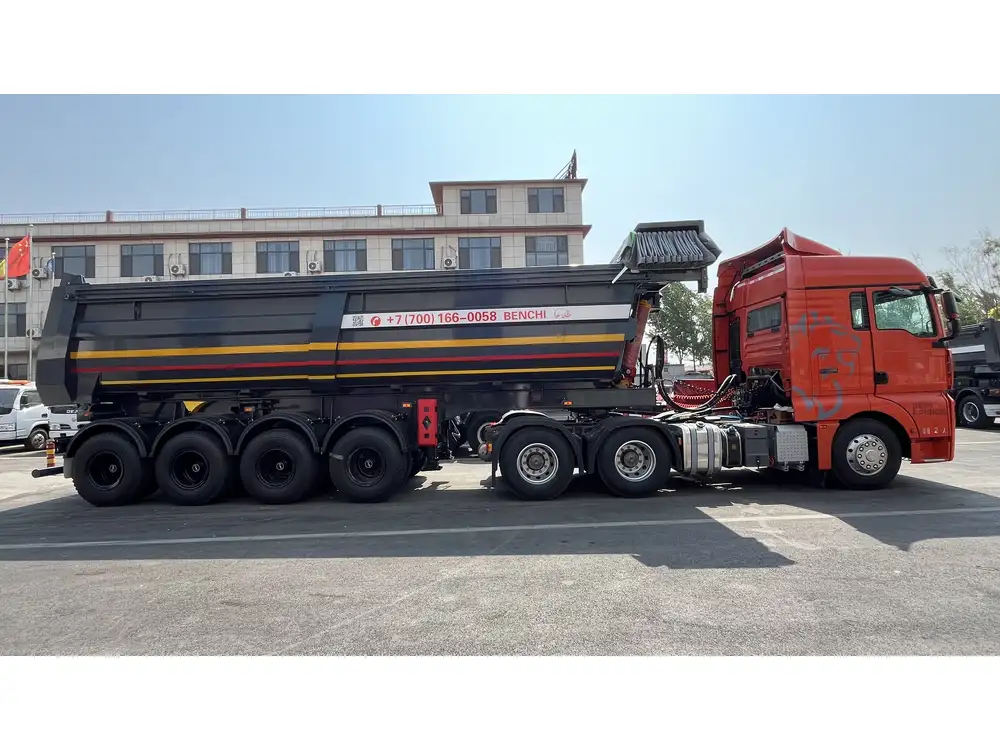Introduction to Semi-Trailer Brake Systems
Semi-trailers are the backbone of heavy-duty transportation, comprising a complex assembly of components that work together to ensure safety and control while towing. Among these components, the disc brake system is paramount in guaranteeing reliable stops, especially under heavy loads. However, like any mechanical device, these brakes can sometimes freeze due to various reasons, including temperature variances, moisture ingress, or issues with brake components. Understanding how to unfreeze these disc brakes is critical for ensuring safe operation and maintaining the integrity of your transportation logistics.
Understanding the Causes of Frozen Disc Brakes
Before diving into the methods for unfreezing disc brakes, it is crucial to identify the common causes. Here are several factors that could contribute to the freezing of disc brakes on semi-trailers:
| Cause | Description |
|---|---|
| Moisture and Ice | Water can permeate into the brake assembly and freeze, causing the components to stick. |
| Corrosion | Rust may build up on the brake components, especially in older models or those exposed to harsh conditions. |
| Lack of Maintenance | Neglecting regular checks or failing to replace worn components can lead to malfunctions. |
| Faulty Brake Calipers | If the calipers do not retract properly, it can lead to the brakes being partially engaged, resulting in freezing. |
| Improper Storage | Extended exposure to cold and harsh environments without proper precautions can exacerbate problems. |
By recognizing these causes, operators can better mitigate risks and take proactive measures to keep their systems in excellent working condition.

Steps to Unfreeze Disc Brakes on a Semi-Trailer
The process of unfreezing disc brakes requires careful attention to detail and adherence to safety protocols. Below are the step-by-step actions to effectively address this issue.
1. Safety First: Prepare Your Work Environment
- Secure the Vehicle: Begin with parking the semi-trailer on a flat, stable surface. Use wheel chocks to prevent movement.
- Wear Appropriate Gear: Safety goggles, gloves, and steel-toed boots are recommended to protect against potential hazards.
- Mechanics’ Tools: Ensure you have a complete set of tools at your disposal, including a jack, jack stands, basic hand tools, and a brake cleaner.
2. Inspect the Brake System
- Visual Assessment: Check the brake discs, calipers, and pads for any visible signs of rust, moisture, or damage. Take notes on any anomalies.
- Listen for Unusual Sounds: Engage the brake pedal and listen for grinding or scraping sounds, indicating that components may be stuck together.

3. Apply Heat to the Frozen Components
- Using Heat Gun or Torch: Carefully apply heat to the caliper and rotor area. Be sure to maintain a safe distance to avoid damage or ignition of surrounding materials.
- Caution: Always check the manufacturer’s guidelines concerning temperature limits.
4. Increase Mobility with Lubrication
- Apply Penetrating Oil: Use a high-quality penetrating oil on the caliper bolts and any moving parts to help free up frozen components. Allow the oil to saturate for several minutes.
5. Mechanically Engage the Brakes
- Continuous Engagement: While keeping the heat applied, have an assistant depress the brake pedal, which may help to disengage any components that are stuck.
- Use a Soft Hammer: Gently tap the caliper and disc surface with a rubber or plastic mallet to free components that might be seized together.

6. Rotate the Wheel
- Manual Rotation: Attempt to rotate the wheel manually. If it doesn’t budge, continue applying heat and lubricant. Sometimes a small amount of force can help nudge stubborn parts loose.
7. Check the Brake Fluid
- Fluid Level Check: Verify that the brake fluid is at the correct level and condition. Dehydrated or contaminated brake fluid can lead to performance issues.
8. Reassess After Initial Attempts
If the brakes are still refusing to function after the aforementioned steps:
- Use a Hydraulic Jack: Elevate the semi-trailer and access the brakes more thoroughly.
- Inspect for Damage: Look for signs of damage to brake linings, pads, and rotors. If any components are compromised, they must be replaced.

9. Consider Professional Help
If all attempts to unfreeze the disc brakes have proven futile, it may be time to consult with a certified mechanic specializing in semi-trailer brake systems. They can provide advanced diagnosis and repairs.
Preventive Measures for Future Brake Issues
After successfully unfreezing the disc brakes, adopting a preventive maintenance schedule can thwart future problems:
Routine Inspection Checklist
- Regular Visual Checks: Inspect brake components visually every month.
- Hydraulic Fluid Quality: Test and replace brake fluid as necessary.
- Brake Pad and Disc Replacement: Adhere to replacement schedules based on usage volume.

Storage Techniques
- Indoor Parking: Whenever possible, store semi-trailers indoors to shield them from moisture and extreme temperatures.
- Covering Trailers: Use high-quality covers if indoor storage is not an option, as they can protect from environmental exposure.
Upgraded Brake Technology
- Disc Brake Improvement: Consider investing in upgraded braking systems that have better resistance to freezing conditions.
Conclusion
Expertly addressing the issue of frozen disc brakes on semi-trailers protects not just the vehicle, but also the safety of cargo and drivers alike. By understanding the causes and implementing systematic measures, both immediate and long-term, operators can ensure reliable braking performance.
For operators who value operational efficiency and safety, consider adopting a rigorous maintenance routine and employing proactive measures to mitigate risks. The journey necessitates knowledge, diligence, and sometimes professional help, but the outcome — dependable, responsive brakes — is undeniably worth the effort. By remaining informed and prepared, we can all contribute to safer highways and successful hauls.



